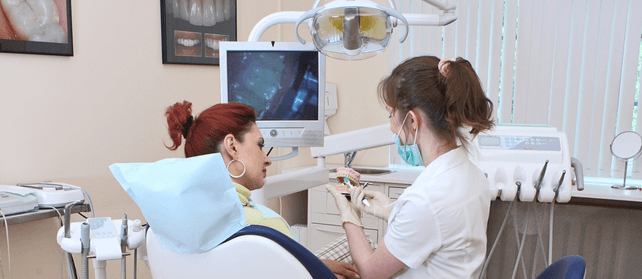When capturing digital impressions in dentistry, choosing the best intraoral scanner is crucial. But how do we determine what the best means? Is it about image quality, or do factors like ease of use and integration capabilities carry equal weight?
This constant quest for the best intraoral scanner has led to continuous advancements in the field. It enhances patient comfort and clinical efficiency.
So, what qualities should one look for in an intraoral scanner to ensure it provides the best service? Let’s delve into this.
Contents
Image Quality
The image quality of an intraoral scanner is paramount. It determines the level of detail portrayed. It, in turn, influences the accuracy of the dental restoration.
Higher resolution gives a more accurate representation of the intraoral environment. It is crucial for precise implant placement. Yet, remember that image quality isn’t just about resolution.
It also encompasses color accuracy and depth perception. So, look for one that delivers high-quality imaging for accurate implants and other dental procedures.
Ease-of-use
An intraoral scanner should have a user-friendly interface. It is crucial to make the workflow smooth and efficient. Short learning curves are helpful.
It allows dental professionals to adapt to the technology. The scanner should be lightweight and comfortable to handle.
A triple-tray feature can be a bonus. It makes it easier to capture simultaneous upper and lower impressions.
So, when choosing an intraoral scanner, consider its ease of use. It includes its handling, user interface, and features like the triple-tray. It all contributes to an effectual dental practice.
Integration Capabilities
Integration capabilities form a critical factor when assessing the best dental 3D scanners. A scanner that integrates with existing software and systems in your dental practice boosts efficiency.
It allows seamless data transfer and collaboration with labs. It enhances treatment planning and results.
A scanner with cloud-based functionality facilitates easy sharing and storage of data. Also, consider the scanner’s compatibility with different milling machines or 3D printers.
Infection Control
Infection control is a crucial aspect to consider when selecting an intraoral scanner. The scanner should easily adhere to strict sterilization protocols. One option is single-use, disposable tips to prevent cross-contamination.
Another is sterilizable tips, which need a thorough cleaning after each use. As part of this, the scanner must be resistant to disinfectants. It’s crucial to ensure patient safety while maintaining the longevity of the device.
Thus, the ideal intraoral scanner should meet high standards of infection control. It contributes to a safer dental practice.
Training and Support
When choosing an intraoral scanner, don’t overlook the manufacturer’s training and support. It ensures a smooth transition to the new technology. The vendor should provide:
- Comprehensive training
- Ongoing technical support
- Immediate troubleshooting
- Regular software updates
These aspects of training and support can help cut downtime, boost productivity, and ensure you are making the most out of your investment. So, the value of an intraoral scanner is defined by the device itself. It is also to the level of training and support provided by the manufacturer.
Consider These When Selecting the Best Intraoral Scanner
Selecting the best intraoral scanner involves a thorough evaluation of many factors. It’s not just the device but also the support behind it. High image quality, ease of use, integration capabilities, infection control, and solid vendor support are vital.
When these elements align, you have your best intraoral scanner. It enhances dental practice, improving efficiency, clinical outcomes, and patient satisfaction. Remember, the best choice is one that fits your unique practice needs.
Did you find this article helpful? If so, check out the rest of our site for more informative content.

